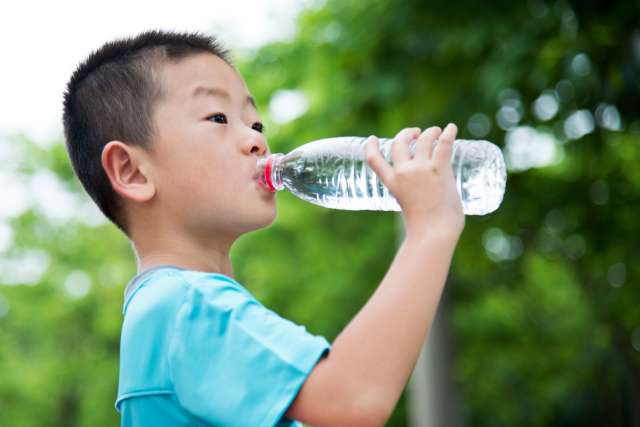How can I Prevent Heat Illness in my Child?

How can I Prevent Heat Illness in my Child?
14 May, 2024
MD, DNB (Paediatrics)
Consultant Paediatrician
Smile Children Clinic, Andheri, Mumbai
Summer brings sunshine, vacations, and outdoor fun. But for children, the scorching heat can pose a serious health threat. Their bodies are less efficient at regulating temperature, making them more susceptible to heat-related illnesses. As a child health expert, our top priority is keeping your little ones safe and healthy during the hot months. This article equips you with the knowledge and tools to prevent heat illness in children, ensuring a happy and healthy summer for the whole family.
Why Heat Illness happen in Children?
Heat illness occurs when the body overheats and can't cool down on its own. Unlike adults, children have a smaller body mass and sweat less efficiently. This makes it harder for them to lose heat from body, leading to a rapid rise in body temperature.
There are many types of heat illness:
· Heat Rash: The mildest form, characterized by red, itchy bumps on the skin, typically appearing on the neck, chest, and inner thighs (Milia)
· Dehydration: This is more likely to happen in hot weather as body loses water by sweating and also the requirement of water is more.
· Heat exhaustion: sweating, cold, pale, and clammy skin, nausea or vomiting, tiredness or weakness, dizziness, irritability are seen in a child with heat exhaustion.
· Heat Cramps: These are painful muscle cramps usually affecting the legs and arms. They can occur during or after the activity in hot weather.
· Heatstroke: The most serious heat illness, heatstroke is a medical emergency. It involves a high body temperature (often above 104°F), confusion, dizziness, vomiting, and sometimes seizures/fits.
So, how do I prevent all these?
The good news is that most heat-related illnesses are preventable with simple strategies. Here's what you can do to keep your child cool and safe:
Hydration is Crucial:
· Offer fluids frequently: Don't wait until your child feels thirsty. Encourage regular sips of water or a sugar-free electrolyte drink throughout the day, even if they're not actively playing.
· Make it fun: Use colourful cups with straws, ice pops, or frozen fruit chunks to make water intake more appealing.
· Limit sugary drinks: Sugary drinks can dehydrate your child further. Avoid sodas, fruit juices, and sports drinks unless they're heavily diluted with water.
Dress for the Weather:
· Light and loose clothing: Choose breathable fabrics like cotton in light colours. Avoid tight-fitting clothes or dark colours that absorb heat.
· Sun protection: Don't forget a wide-brimmed hat or cap and sunglasses. Apply sunscreen with SPF 30 or higher to exposed skin 15 minutes before going outdoors and reapply every two to four hours, or more often if sweating.
Schedule Outdoor Activity Wisely:
· Plan for cooler times: Avoid the peak heat of the day, typically between 10 am and 5 pm. Opt for early morning or evening outings when the sun's intensity is lower.
· Seek shade: Whenever possible, stay in shady areas like under trees or umbrellas.
· Plan breaks: Schedule frequent breaks in air-conditioned spaces or cool, shaded areas. Let your child rest and rehydrate during these breaks.
Create a Cool Environment at Home:
· Air conditioning: If you have air conditioning, use it to maintain a comfortable indoor temperature.
· Cooling alternatives: If you don't have air conditioning, utilize fans, cool baths, or damp washcloths to cool your child down.
Additional Tips:
· Never leave a child unattended in a car: Even with cracked windows, car temperatures can rise very quickly, leading to heatstroke within minutes.
· Be aware of medications: Some medications can increase heat sensitivity. Talk to your Paediatrician if you're concerned about your child's medications affecting them in hot weather.
· Lead by example: Let your children see you practicing good hydration and heat-protective behaviours.
Recognizing the Signs of Heat Illness:
Knowing the above signs of heat illness can help you intervene early and prevent a more serious situation.
What to Do if Your Child Shows Signs of Heat Illness:
· Move them to a cool environment: Get them out of the heat and into an air-conditioned space or shady area.
· Remove excess clothing: Loosen or remove any unnecessary clothing.
· Cool them down: Give them cool fluids to drink and apply cool, damp cloths to their forehead and neck. Consider a cool bath or shower if they're alert enough.
· Monitor their condition: Closely monitor your child's temperature and symptoms. If they are vomiting or not improving, or if you suspect heatstroke
· Rush to your Child Specialist doctor or nearest paediatric hospital immediately: Expert Child Specialist at Smile Children Clinic are well experienced in dealing with heat illnesses in children & adolescents. Please call on 9226893706 to book an appointment for any issue related to Child and Adolescent health.
